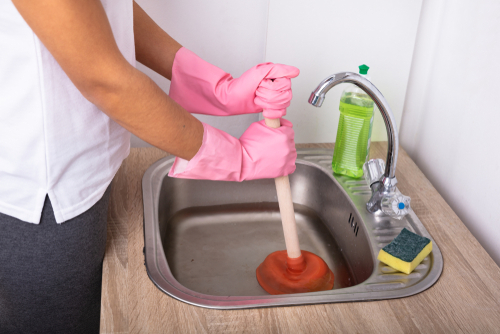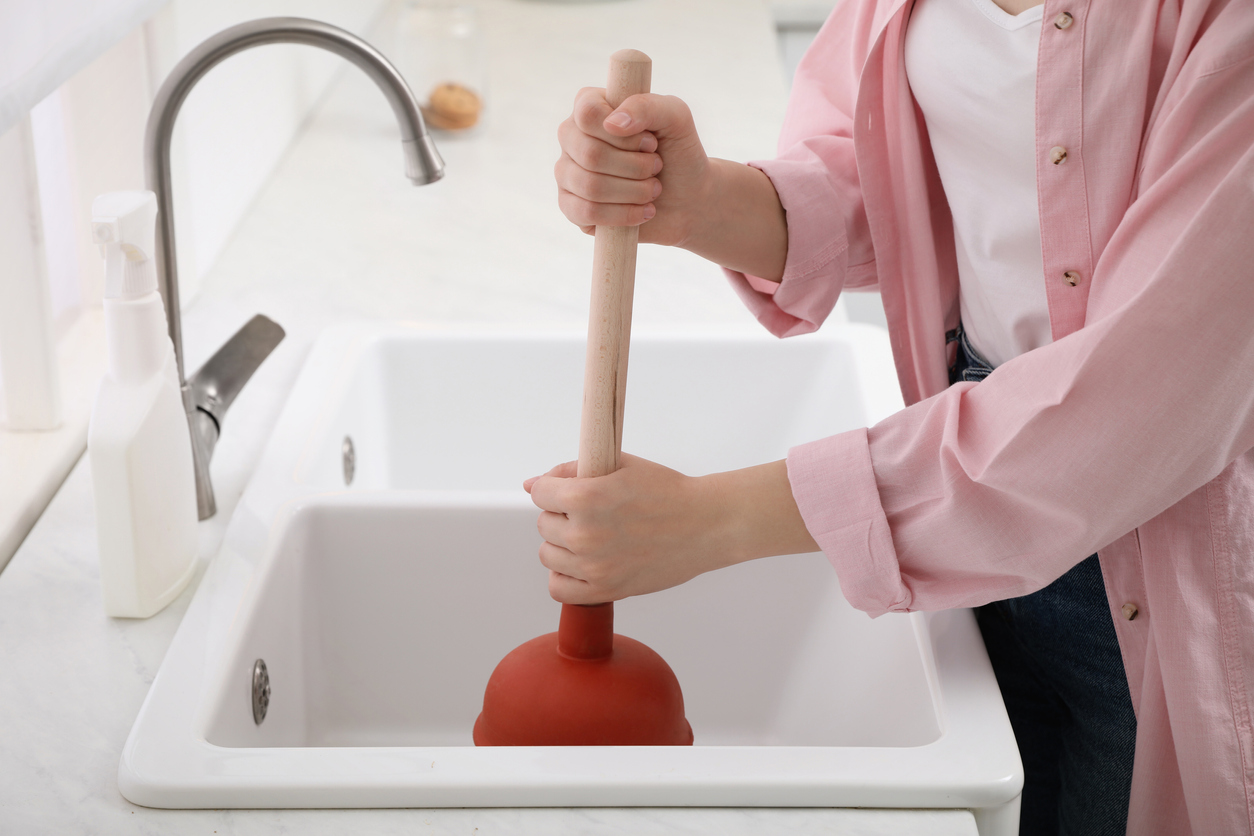Applying Plunger and Drain Cleaners: Effective Techniques
Applying Plunger and Drain Cleaners: Effective Techniques
Blog Article
Just how do you actually feel in regards to Here's How to Correctly Use a Toilet Plunger?

Intro
Appropriate upkeep of home drains is vital for avoiding obstructions and guaranteeing smooth water flow. Among the trick tools in every home owner's toolkit is the plunger, alongside various drain cleansers developed to tackle persistent obstructions successfully. This write-up explores just how to utilize bettors and drainpipe cleansers properly to keep your drains streaming easily.
Area 1: Recognizing Plungers
Kinds of Plungers
There are a number of types of bettors readily available, each made for various types of drains and blocks. The most typical types include cup bettors, flange plungers, and accordion plungers.
Just How Plungers Job
Bettors work with the concept of creating pressure and suction to displace blockages. When appropriately applied over a drainpipe, they produce a vacuum that can take out particles or separate blockages.
Selecting the Right Bettor
Selecting the ideal plunger depends on the kind of drainpipe and the nature of the clog. Cup bettors are perfect for sinks and tubs, while flange plungers are much better fit for bathrooms as a result of their style.
Typical Mistakes with Plungers
Staying clear of these errors guarantees efficient plunging: improper seal around the drainpipe, insufficient force, and not clearing bordering debris.
Area 2: Making Use Of Plungers Successfully
Preparation
Prior to plunging, make certain the plunger covers the drainpipe totally and develops a limited seal. Clear any visible debris around the drainpipe opening.
Technique
Start with gentle plunging motions to build suction. Boost stress gradually, using a stable rhythm. Repeat as essential up until the drain removes.
Repairing Tips
If diving doesn't work, try changing the seal, using oil jelly for a better seal, or using a different kind of plunger.
Section 3: Comprehending Drainpipe Cleaners
Types of Drainpipe Cleaning Company
Drain pipes cleansers can be chemical or chemical. Chemical cleaners utilize solid chemicals to dissolve blockages, while enzymatic cleaners make use of natural enzymes to break down organic matter.
Just How Drainpipe Cleansers Work
Chemical cleaners respond with clogs to liquify them, while enzymatic cleansers break down natural products like hair and grease without damaging pipes.
Safety Factors to consider
Always put on gloves and eye defense when making use of chemical drainpipe cleaners. Make sure appropriate ventilation and comply with supplier instructions very carefully.
Eco-Friendly Alternatives
Take into consideration utilizing vinegar and cooking soda or enzyme-based cleansers for environmentally friendly choices that are safer for pipes and the environment.
Section 4: Using Drain Cleansers Successfully
Application Strategies
Put chemical cleaners straight into the drain opening. Enable them to help the advised time prior to flushing with warm water. Chemical cleaners need to sit over night.
Precautions
Avoid blending various sorts of cleaners, as this can generate harmful fumes. Never ever use chemical cleansers in conjunction with a plunger, as splashing can take place.
Handling Stubborn Blockages
For relentless obstructions, think about utilizing a pipes serpent or calling an expert plumbing technician to stop damages to pipelines.
Verdict
Finally, comprehending how to use plungers and drainpipe cleaners successfully is important for maintaining healthy and balanced plumbing systems. By selecting the right devices and techniques, property owners can deal with minor blockages and stop significant plumbing issues down the line.
How to Use a Plunger to Unclog a Drain
The humble plunger is a simple yet effective tool for breaking clogs in sinks, tubs and toilets. This handy tool is easy to use. You can make the most of its power if you understand how it works. Ready to dive in? Here’s what you need to know.
Safety First!
Never use a plunger with drain chemicals. Water will splash as you work, and the chemicals can spatter, burning skin and eyes. It’s a good idea to use rubber gloves and wear safety goggles when you work on a clog.
Choose the Right Tool for the Job
Plungers come in two different styles. Sinks, bathtubs and showers require a cup plunger. Like its name suggests, the rubber end is shaped like a cup. Use a flange plunger on toilets. These plungers have a rubber funnel extending from the cup. A plunger needs to be big enough to cover the drain.
Ready, Set, Plunge!
Coat the rim: Coat the plunger rim with petroleum jelly. This helps make a better seal.
Block outlets: Hold a wet rag over nearby outlets such as the overflow vent or the drain in a second sink.
Release air: Insert the plunger at an angle into the water. Water will displace air in the cup. A water-filled cup is more forceful than one filled with air.
Keep the plunger upright: Hold the plunger perpendicular to the drain. Use fast, forceful strokes, but make the first stroke gentle. The first stroke can create a splash if the cup still contains air. Thrust the plunger 15 to 20 times.
Snap off the plunger: The final stroke should be a strong upward motion that ends when the plunger snaps off the drain.
Repeat the process: you may need to repeat this sequence several times. When the water drains away, your work is done. High-five! https://plumbernw.com/blog/how-to-use-a-plunger-to-unclog-a-drain/

Application Strategies
Put chemical cleaners straight into the drain opening. Enable them to help the advised time prior to flushing with warm water. Chemical cleaners need to sit over night.
Precautions
Avoid blending various sorts of cleaners, as this can generate harmful fumes. Never ever use chemical cleansers in conjunction with a plunger, as splashing can take place.
Handling Stubborn Blockages
For relentless obstructions, think about utilizing a pipes serpent or calling an expert plumbing technician to stop damages to pipelines.
Verdict
Finally, comprehending how to use plungers and drainpipe cleaners successfully is important for maintaining healthy and balanced plumbing systems. By selecting the right devices and techniques, property owners can deal with minor blockages and stop significant plumbing issues down the line.
How to Use a Plunger to Unclog a Drain
The humble plunger is a simple yet effective tool for breaking clogs in sinks, tubs and toilets. This handy tool is easy to use. You can make the most of its power if you understand how it works. Ready to dive in? Here’s what you need to know.
Safety First!
Never use a plunger with drain chemicals. Water will splash as you work, and the chemicals can spatter, burning skin and eyes. It’s a good idea to use rubber gloves and wear safety goggles when you work on a clog.
Choose the Right Tool for the Job
Plungers come in two different styles. Sinks, bathtubs and showers require a cup plunger. Like its name suggests, the rubber end is shaped like a cup. Use a flange plunger on toilets. These plungers have a rubber funnel extending from the cup. A plunger needs to be big enough to cover the drain.
Ready, Set, Plunge!
Coat the rim: Coat the plunger rim with petroleum jelly. This helps make a better seal. Block outlets: Hold a wet rag over nearby outlets such as the overflow vent or the drain in a second sink. Release air: Insert the plunger at an angle into the water. Water will displace air in the cup. A water-filled cup is more forceful than one filled with air. Keep the plunger upright: Hold the plunger perpendicular to the drain. Use fast, forceful strokes, but make the first stroke gentle. The first stroke can create a splash if the cup still contains air. Thrust the plunger 15 to 20 times. Snap off the plunger: The final stroke should be a strong upward motion that ends when the plunger snaps off the drain. Repeat the process: you may need to repeat this sequence several times. When the water drains away, your work is done. High-five! https://plumbernw.com/blog/how-to-use-a-plunger-to-unclog-a-drain/

I hope you enjoyed reading our excerpt about How to Use a Plunger to Unclog a Toilet or Drain. Many thanks for taking a few minutes to read through our posting. Sharing is caring. Helping others is fun. We take joy in reading our article about .
Schedule Your Service Report this page